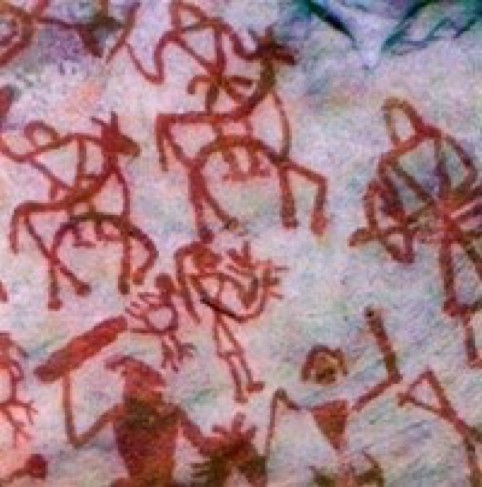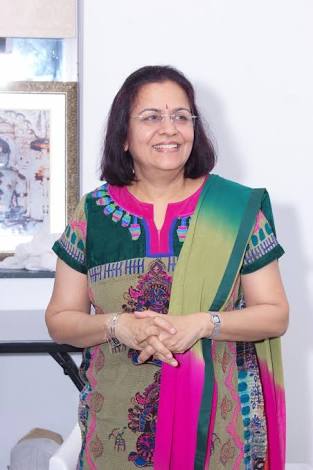Now a question arises that why I have chosen the medium of painting to express Anekāntavāda. We are clear that according to anekāntavāda, truth has many aspects, while language has such limitation as it can throw light upon only an aspect of truth at a time. Therefore, in this case it is impossible to say two contradictory things at a time. On the other hand, the scope of paintings as a medium of expression is much wider and it is capable of expressing many aspects at one time. As a result, expression by words can be understandable through syādvāda, nayavāda in parts. However, paintings are much closer to anekāntavāda, as it can depict the complete truth altogether. Moreover, art, unlike language, has two or three dimensions making it possible to highlight contrasts and contradictions.

In prehistoric times, men used signals, symbols and sketches to express themselves. We find such medium of expressions in the caves as paintings, but no signs of alphabets. The symbols and sketches, however, provide an insight into their thinking and the mental aspect plays an important role in man's cultural history. Along with its antiquity we cannot deny the importance of the paintings as an universal language.

As an example nearly 5,000 years ago from now, the seal excavated from Harappa and Mohenjodaro has a healthy powerful bull carved on it. This picture carving of a bull is understandable, but, along with it, the script of the seal has not been deciphered till today. Therefore, the Indus-valley civilisation is still in the proto-historic period for us. What is indeed remarkable is the fact that the script still remaining undeciphered and the picture-carving on it gives us no trouble in understanding it. This one instance is enough proof that paintings have universal appeal and it cannot be bound by time and space.
 Dr. Manju Nahata
Dr. Manju Nahata